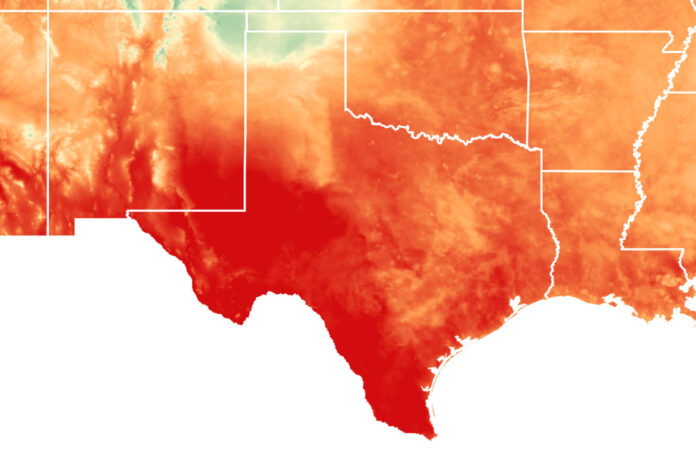The significant early-season heatwave affecting Texas has already broken records and placed great stress on the state, its infrastructure, and its health services. Temperatures between 100°F and 111°F were reached in central and southern parts of the state during mid-May 2025, a usual high for a summer day. In places in the area, the heat reached higher levels than in Death Valley, a well-known hot spot. Austin reached a new temperature record, going well past the norm with 101°F in the afternoon on May 14, compared to 87°F earlier in the month.
The National Weather Service advised people to stay inside, drink water, and limit their time in the sun. The weather service says the heat will remain for at least another week, causing concerns over safety and how infrastructure holds up.
Public Health and Infrastructure Strained
Because of the intense heat, both people and the city’s infrastructure are working under a great deal of stress. Older people, small children, people who spend a lot of time outdoors, and those who cannot cool off with air conditioning are more likely to develop heat-related problems, including heat exhaustion and heatstroke. A rise in emergency department visits was seen in major cities because of the heat.
The state’s electrical grid is facing a great deal of pressure. The more people turned on their air conditioners in the heat, the more energy was needed across the state. According to ERCOT, May 2021 saw energy use hit a new high of nearly 78,000 megawatts. The rise of more power-demanding businesses such as data centers and cryptocurrency facilities in Texas, led to even greater demand for energy.
Also read: Devastation in St. Louis: Tornado Leaves Five Dead and Hundreds Injured
Climate Change is Related to the Crisis
Many scientists agree that climate change directly contributed to the heatwave we have seen. Heatwaves are now more frequent, severe, and last longer than before, mainly because people have warmed the Earth’s atmosphere. Coal, oil, and natural gas are fossil fuels that generate greenhouse gases that keep the Earth’s air warm. This means the past decade is on record as the hottest since more than 175 years of observation, and 2024 came in as the warmest year.
Wildfires, extremes in storms, and stretched periods of droughts are examples of disruptions seen along with this Texas heatwave, a trend that is growing. Experts point out that if we do not act strongly, we will witness more dangerous and more frequent disasters.
Energy Grid and Policy Challenges
The mostly independent Texas power system is being tested again after problems during winter storms in recent years. Though the grid kept up during the first warm spell, ERCOT monitoring has increased, as another problem could push capacity to its limit. They suggest that the weak regulation and lack of ties to neighboring energy markets make Texas more at risk during bad weather.
Politically, climate policy remains contentious. Although some towns and cities are taking steps to be more energy efficient, the government’s role has not been very significant. With Trump back in office, the government has eased rules for polluters and is pushing to develop more fossil fuel sources, such as leaving the Paris Agreement. The way climate policy is now being handled differs greatly from recommendations by scientists and could weaken overall efforts to solve climate change worldwide.
Looking Ahead: Adaptation and Resilience
In the face of these challenges, cities and communities across Texas are beginning to adopt climate adaptation strategies. These include installing heat-reflective surfaces, expanding access to public cooling centers, and encouraging the use of solar power and battery storage for backup energy. Programs under the Inflation Reduction Act are also helping households install energy-efficient appliances and improve insulation, reducing both emissions and utility bills.
Still, experts stress that adaptation alone is not enough. Long-term solutions require a transition to clean energy sources and strong policy leadership. Without it, events like the 2025 Texas heatwave could become the new norm, leaving states to battle worsening conditions with inadequate tools.








